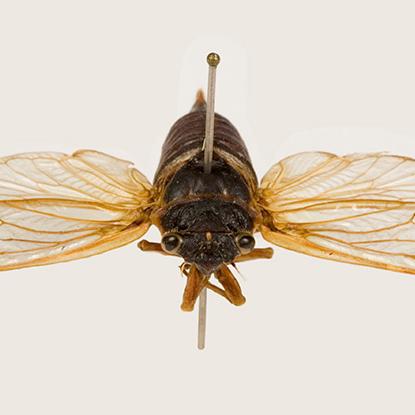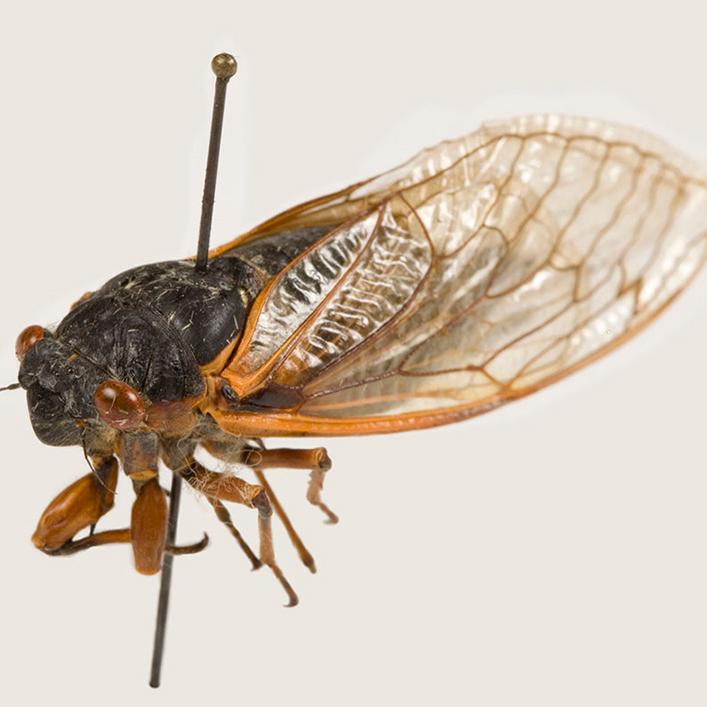The Division of Entomology collections include specimens and continuous records of the location of periodical cicada broods (Magicicada septendecim) in the New Haven area dating back to 1843. These data and specimens were used to establish a first-of-its-kind preserve of the habitat for these insects in Hamden, Connecticut. The last emergence of Connecticut’s Brood II was in 2013. Get ready, the next is approaching fast in 2030!
The periodical cicada spends 17 years developing underground as a nymph, feeding on sap from tree roots. In early summer of its 17th year, these insects emerge—by the thousands, even millions—to reproduce. The entire brood emerges around sunset. The nymphs climb up the trees where they have lived and transform into beautiful, winged adults with black, red, and yellow bodies, ruby eyes, and stiff glossy wings.
The adult 17-year cicada lives for no more than a few weeks. Within a week, males begin to sing a high-pitched song to attract females. After mating, the females carve tiny slits in small tree branches and lay their eggs. Afterward they quickly die. The eggs hatch later that same summer and the tiny nymphs climb down and burrow into the ground to begin their long underground development.
These species emerge in vast numbers because their only defense against predators is “predator satiation”—their sheer numbers overwhelm the appetites of predators. The cicadas are harmless and rarely cause any significant damage. They do not kill trees or other plants, and do not sting, bite, or hurt humans or other animals. They are even safe for pets (and us!) to eat. They are threatened by habitat destruction. To preserve their unique way of life, the Yale Peabody Museum strongly discourages the use of pesticides or other measures that can be harmful to these remarkable creatures.

